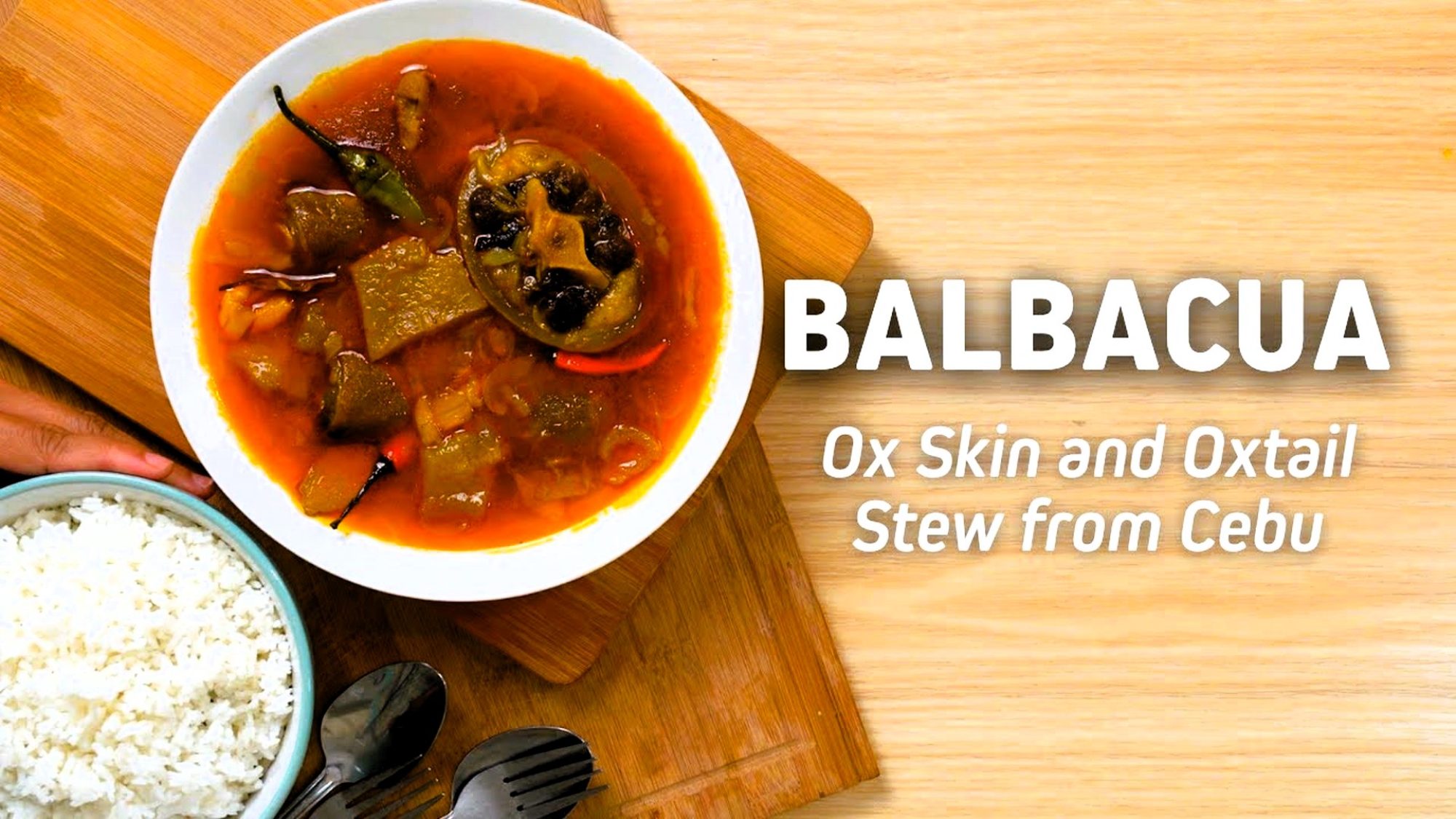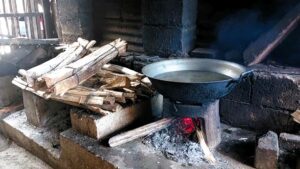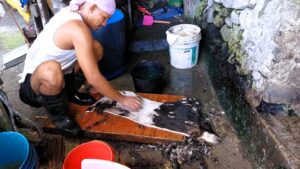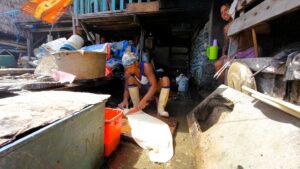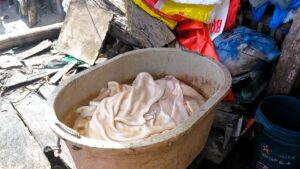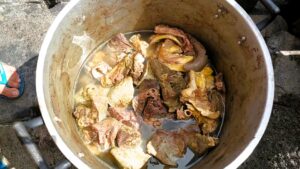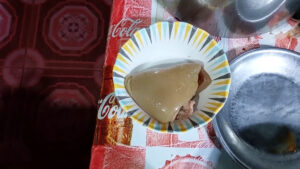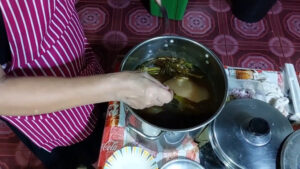Preparing 'Balbacua' in a backyard kitchen
During a visit to a fishing village in the city of Dumaguete, where not everyone is a fisherman, I came across this backyard kitchen. Here, beef and water buffalo skin is prepared for the dish ‘balbacua’. The large pieces of skin are dipped in hot water, which is kept ready over an open fire. The hairs of the hide are then scraped off and the result is a pure, white skin.
When preparing balbacua, there are a number of variations in terms of spices and other ingredients. The dish centres around the use of collagen-rich cuts of beef such as oxtail, skin, shanks and other gristly parts together with normal cuts of beef. Slow cooking for around four to six hours tenderises the meat and the collagen in the skin and cartilage contributes to a gelatinous soup consistency.
Typical spices include garlic, onions, black or white pepper, labuyo chilli, ginger or turmeric, annatto oil (achuete), star anise (sangke), fermented black beans (tausi), bay leaves, coconut vinegar (sukang tuba), lemongrass (tanglad), fish sauce (patis), leeks or spring onions, soy sauce or salt, calamansi and more. Secondary ingredients such as pechay, ground peanuts, baked beans, tomatoes and saba bananas provide further variety. Due to its diverse ingredients, balbacua is likened to a mixture of puchero and kare-kare dishes.
Traditionally served with white rice or with mizua or miki noodles (known as balbacua con misua or balbacua con miki), this tasty dish is a culinary gem that reflects the rich and varied flavours of Filipino cuisine.
Balbacua, also known as balbakwa or balbakoa, is a Filipino beef stew made from various cuts of beef, collagen-rich ingredients (e.g. oxtail, skin and joints) and a range of spices, cooked for several hours to achieve a pleasant tenderness. This dish, which is traditionally eaten with white rice or with mizua or miki noodles, originates from the Visayan regions of the Visayas and Mindanao Islands.
The name “balbacua” goes back to the Latin American dish “barbacoa” (from which the English term “barbecue” is also derived), although the two dishes are very different. Balbacua, a succulent beef stew, stands in contrast to barbacoa, a method in which the meat is roasted in a pit. The name probably comes from the Spanish, as the cooking times and tenderness of the meat are similar between the two dishes.
The owner explains the individual processes to me before he can offer the pre-cooked pieces of skin to customers on his market stall. You often see them as a roll on offer at the butchers who sell beef and water buffalo meat.
In addition to the preparations for the beef or water buffalo skin, offal is also pre-cooked for other dishes.
Balbacua can be found as a dish in many of the small restaurants, such as eateries, kitchenettes and carinderias. Here we are with the pictures in such a carinderia. I arrived just as balbacua was being prepared.
In the following video about eateries at the Dumaguete market you can see and experience what else there is to eat besides balbacua
